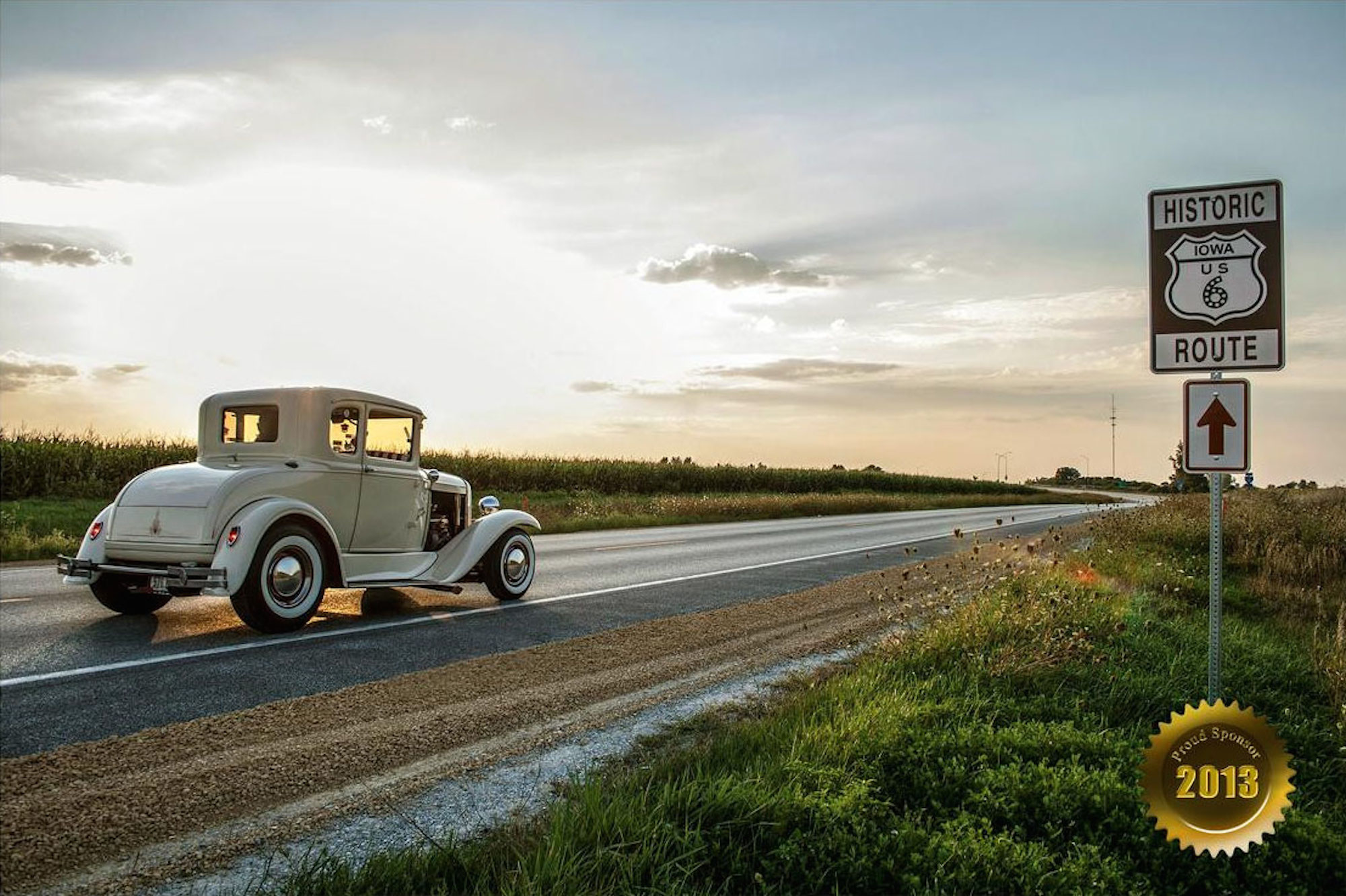
ADD THE REST OF IMAGES!
By Tom Emery on January 25, 2015 12:00 am
Among the nation’s highways, U.S. Route 66 has become synonymous with Americana, its story captured in songs and television shows as well as marketing campaigns to attract international tourists.
U.S. 6, which rolls through Des Moines, never has enjoyed such recognition. But supporters say that Route 6 has “half the digits and twice the kicks” of its cult-status counterpart.
“There’s a lot of significance in Route 6,” remarked Curt Roseman of Moline, Ill., a retired geography professor from the University of Southern California. “A lot of people just don’t know about it, like they do with 66 or other famous highways.”
Route 6, which stretches some 3,205 miles from Massachusetts to California, is the longest contiguous highway in the nation, running unbroken through five state capitals and 14 states. In 1937, the highway became transcontinental when it was extended to Long Beach, Calif. The route was the nation’s longest highway until 1965, when the section from Long Beach northward to Bishop was decommissioned.
During that time, Route 6 ran for 3,662 miles, as compared to the 2,448 miles of Route 66 from Chicago to Santa Monica, Calif. U.S. 20, now the longest highway in the nation, measures 3,345 miles.
The roots of Route 6 date to 1925, when its first numbered segment ran from Provincetown, Mass., near the farthest point on Cape Cod, to Brewster, N.Y. Six years later, it was extended to Greeley, Colo., which took it through northern Indiana.
Today, Route 6 enters Northwest Indiana through central LaPorte County, runs westward through Westville, Portage and Hobart, and turns north through Lake Station to join Interstates 80 and 94 toward Illinois.
Much of the path of Route 6 was the Sauk Indian Trail of the late 1700s, sometimes called the Great East-West Trail. A modern forerunner to U.S. 6 was Ind. 6, for which signs were erected between the Illinois line and Westville in 1926. Signs for U.S. 6 were then installed in the summer of 1932, when the road was paved.
Roseman became interested in Route 6 based on his own experiences. “When I was at USC, my office was a half-block off the old route of 6,” he said. “I grew up in Moline, which also has Route 6. When we’d come back home from California, we’d take Route 6, sometimes twice a year.”
As a result, Roseman, his wife Libby, and Kevin Patrick of Indiana, Pa. launched a research project about Route 6 to collect historical and contemporary data. Roseman says his interest reflects his career pursuit.
“In geography, you want to take in many things,” he said. “You want to study not only the highway itself, but the roadside businesses, the regions the highway travels through, the cities that grew up along it, the people that live with it. You want a wide array of information.”
Their efforts resulted in a website that interprets the history and locations of Route 6. Formerly hosted by Augustana College, the site is now located within www.heritagedocumentaries.org, a Quad Cities-area group in which Roseman is heavily involved.
The website includes historical information along with a tour map, bibliography and fun facts about Route 6 that help fill the public-relations void that the highway seems to suffer from.
“U.S. Route 30 is the old Lincoln Highway, and people still refer to it as such,” said Roseman. “Route 20 is the longest, while U.S. Route 40 was built along the National Road, which has great historical meaning. And, of course, there’s Route 66. I think Route 6 just doesn’t get that type of hype.”
While many of those roads, particularly Route 66, have been studied in books or television programs, Route 6 does have a place in literature that reflects its lack of respect. In Jack Kerouac’s novel “On the Road,” a main character thinks about hitchhiking along Route 6 to Nevada, but is discouraged by a driver who tells him “there’s no traffic passes through 6.”
Similarly, historian and novelist George Stewart considered Route 6 for a study of the transcontinental U.S. in the late 1940s before settling on Route 40. He reasoned that “Route 6 runs uncertainly from nowhere to nowhere, scarcely to be followed from one end to the other, except by some devoted eccentric.”
Certainly, the towns along Route 6 would disagree, and offer plenty of other stories to tell. In 1953, the route was designated the “Grand Army of the Republic Highway” to honor the influential Civil War veterans’ organization.
In Iowa, major parts of the legendary “River to River Road” that was constructed in a single day in 1910 later became Route 6. In the 1920s, the future path of Route 6 in Iowa was marked by utility poles painted white, giving birth to the nickname “White Pole Road.”
“It’s not as famous as Route 66, by any measure, but Route 6 is certainly important,” concluded Roseman. “It used to be the longest highway in the country, and it runs through many major cities and towns. I think it deserves to be understood and appreciated.”
(Source: <a href=”http://www.nwitimes.com/news/opinion/forum/route-has-plenty-of-stories-to-tell/article_a7a26012-7b67-5eb0-b830-eaa7dc7004b8.html” target=”_blank”>http://www.nwitimes.com/news/opinion/forum/route-has-plenty…</a>)




Totally true! Route 6 has plenty of stories to tell… Totally true! Route 6 has plenty of stories to tell… Totally true! Route 6 has plenty of stories to tell… Totally true! Route 6 has plenty of stories to tell… Totally true! Route 6 has plenty of stories to tell… Totally true! Route 6 has plenty of stories to tell…